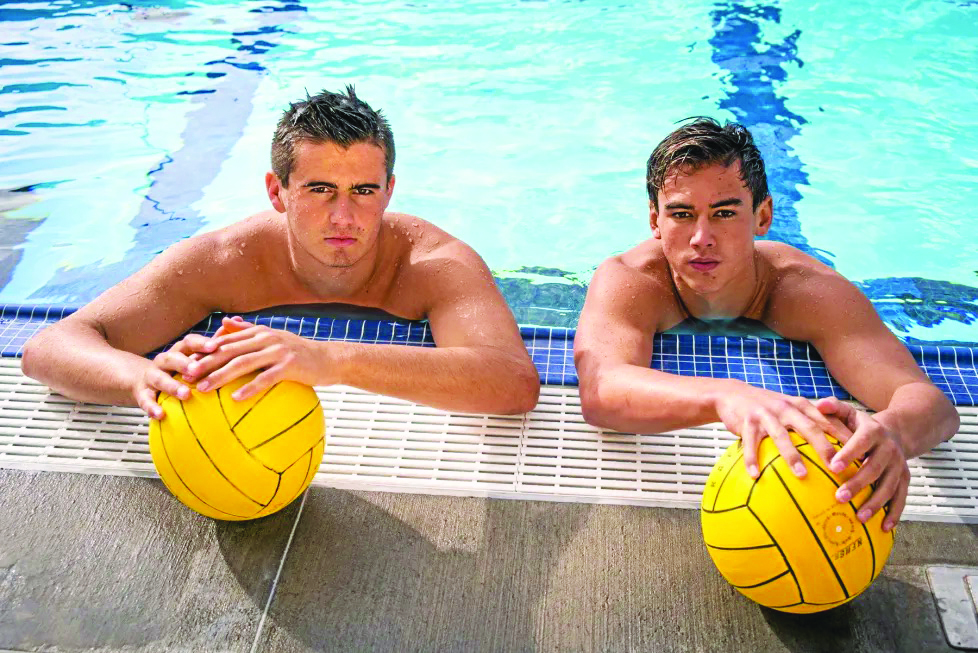By Michael Vann
As a competitive tennis player vying for a spot on a Division I team, the recruiting process began for me in ninth grade when I began receiving letters from about 30 colleges with mainly Division I teams.
However, the process really kicked into high gear in January of my junior year. I hired a consultant from Laguna Niguel, Julien Heine, who has been helping me throughout the process. At our first meeting, Heine and I discussed a list of about 20 possible colleges for me to consider.
I was looking for a university that combined top academics as well as a solid Division I tennis program where I could play.
Once Heine and I picked out my top 20 schools, I began sending e-mails to the coaches of these schools, including a personal bio and expressing my interest. I mainly focused on Ivy League schools and other schools ranked in the 50 to 75 range in Division I.
Most of the coachesâ responses seemed as if they were pretty interested.
However, with a surprisingly enormous number of top 150 recruits in the country interested in Ivy League schools and other top east coast academic institutions, the coaches needed to see my results for the next eight months.
My summer got off to a great start as I had a breakthrough victory and my best tournament of the year as I reached the round of 16 in the Southern California Sectional Tournament, the biggest tournament in Southern California.
There were numerous college coaches at the tournament including UC Santa Barabara, Brigham Young University, University of Washington, Purdue, Pepperdine and Santa Clara. The coaches that I had been in contact with were very pleased with this result and finally, for the first time in six months, I thought I could now begin to relax.
However, my next three tournaments washed away my success at sectionals as I had three very poor results in my next three national tournaments. With each tournament, I began to get more and more worn out. Waking up at 5:30 a.m. and playing in weather with heat indexes over 110 degrees wasnât at all the way I wanted to spend my summer.
After these three tournaments, it was time to get my game back in shape. The week of July 15, I was going to be playing in the USTA National Clay Court Championships, in Rockville, Md. Virtually every coach from every top program was there.
It was a very overwhelming event because of all the pressure from the coaches who were watching my matches as well as the extremely tough competition because the winner of the tournament got a wild card into a pro event.
Playing in front of almost all the Ivy League coaches as well as some other schools, I lost both my singles matches by scores of 6-2, 6-2 and 6-0, 6-2. I was devastated, and on top of this, both my losses came to players who are going to be playing tennis as freshman at the University of Pennsylvania and Dartmouth College this year.
It was time to go back to the drawing board. A lot of the schools that I had wanted to go to were out the window, and my chance of getting playing time for schools like Northwestern, Vanderbilt, Princeton and Cornell looked very grim. Instead of dwelling on the past, I had to get moving quickly. I replaced some of the schools on my list with Georgetown, UCSB and Boston College.
I immediately got in contact with the Georgetown coach and had my first recruiting conversation on the phone. Calls began to follow from UCSB and Dartmouth. I had only one more tournament left, and if there was ever a time to perform, it was now.
Thankfully, I had the best tournament of my summer in Sacramento and the coaches were very impressed with my results as I won six matches in singles and won the doubles tournament.
When I got back, I received letters of interest from a number of schools that I decided would not be a good fit for my academics and tennis.
Then on Aug. 15, the calls that I had been waiting for came. As an athlete in any sport, you are allowed five official visits where colleges pay for you to come to the campus. I was offered recruiting trips to Georgetown, Dartmouth and UCSB in the fall.
There are two signing weeks for college athletes: one in November and one in April. Iâm looking to sign in November as Iâm anxious to get this pressure-cooking process over with.




























